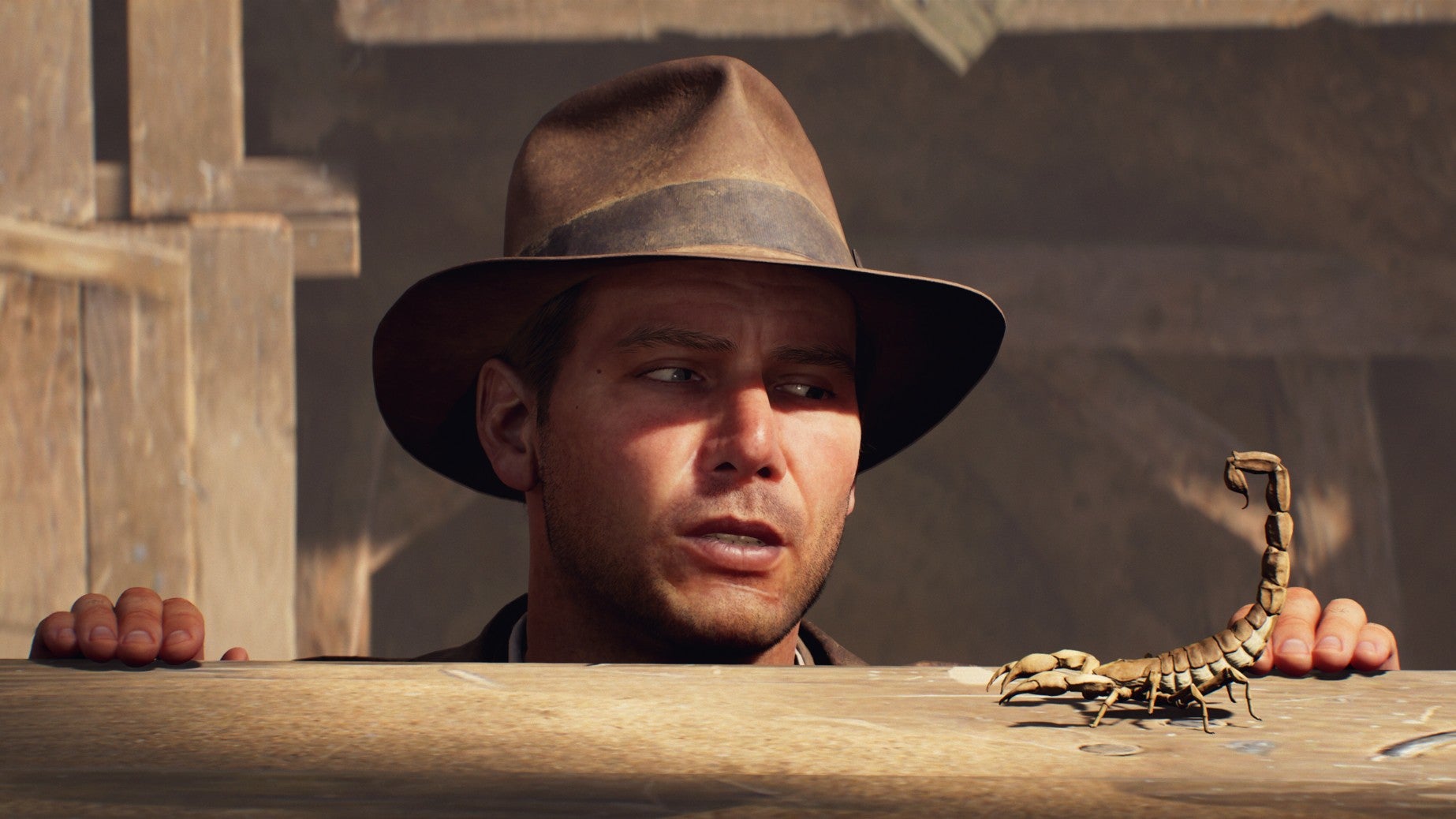If MachineGames is to be believed, the basement level of the Vatican is exempt from the strict Catholic doctrine that dominates the jurisdiction of the Holy See above ground. It’s down there that you’ll find the temples dedicated to faiths that sort of resemble Christianity if you squint a bit and turn your head on your side. And the underground boxing ring set up by Mussolini’s plundering soldiers, who’ll only let you in if you’re wearing one of their infamous black shirts.
The latter is an early test of your ability to get to grips with Indiana Jones and the Great Circle’s fistfighting system. It’s faster than you expect it’s going to be, is the thing: both Indy’s blows and those in response flying like boulders at terminal velocity. Dodging will get you so far, but don’t expect your opponent to keep their arms at their sides while you’re pummelling them in the face. To find an advantage, you’ll need to block and parry, using both hands rather than sticking to the right trigger, and grabbing hold of your target when they stumble – either to get more hits in, or shove them toward the baying crowd.
Baying being the key term. The core Indiana Jones development team first made a name for themselves back in 2004 with The Chronicles of Riddick: Escape from Butcher Bay. That was a kind of first-person prison drama, about ingratiating yourself with fellow cons, instigating riots and stealing keycards, all in an effort to break yourself out of a triple-max security facility on a barren planet. Guns were a rarity – most of them registered to the DNA of the guard holding them, and so useless to you – and Butcher Bay was celebrated as perhaps the only successful example of hand-to-hand combat in an FPS at the time. In fact, FPS felt like a reductive term for this bold mixture of pugilism, stealth, adventure and conversation.
The Chronicles of Riddick: Replayed on Retro 2005 PC – Athlon X2 3800+/GeForce 6800GT Watch on YouTube
The Riddick team went on to make The Darkness, to similar acclaim, and most of its key names either founded MachineGames or joined it later. Their entries in the Wolfenstein canon are notable not only for dual-wielding shootouts, but for the deep characterisation of BJ Blazkowicz and his found family at the Kreisau Circle, as well as the memorable non-combat sequences that brought the player within intimate proximity of detestable villains like Deathshead and Frau Engel. MachineGames perfected a knack for blending b-movie absurdity with real storytelling chops, growing braver with each new project over a decade and a half.
